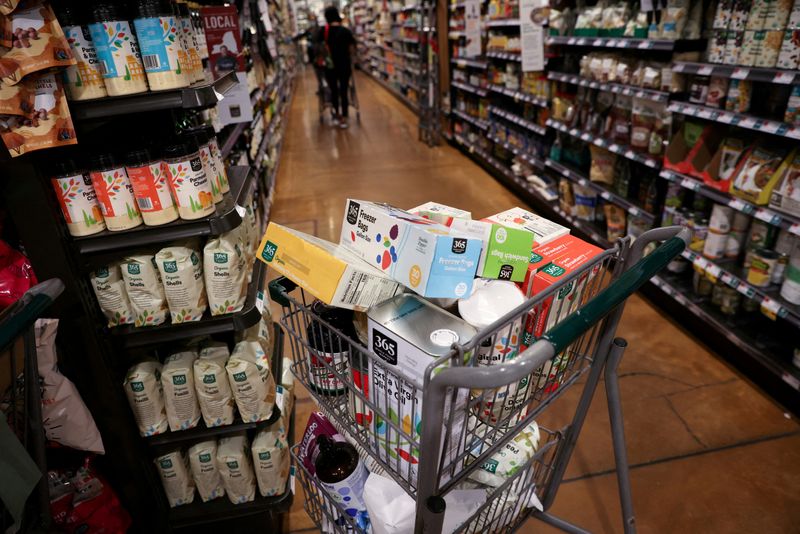US consumer prices increase solidly in April
2023.05.10 10:20

© Reuters. FILE PHOTO: A shopping cart is seen in a supermarket in Manhattan, New York City, U.S., June 10, 2022. REUTERS/Andrew Kelly/File Photo
WASHINGTON (Reuters) – U.S. consumer prices increased in April on higher gasoline costs and rents, while underlying inflation remained strong as used motor vehicle prices rebounded, potentially ensuring that the Federal Reserve keeps interest rates elevated for a while.
The Consumer Price Index (CPI) rose 0.4% last month after gaining 0.1% in March, the Labor Department said on Wednesday. In the 12 months through April, the CPI increased 4.9% after advancing 5.0% on a year-on-year basis in March.
The annual CPI peaked at 9.1% last June, which was the biggest increase since November 1981, and is subsiding as last year’s initial surge in energy prices following Russia’s invasion of Ukraine drops out of the calculation.
Economists polled by Reuters had forecast the CPI climbing 0.4% last month and increasing 5.0% year-on-year.
Gasoline prices rose last month after Saudi Arabia and other OPEC+ oil producers announced further oil output cuts.
But oil prices have since been largely trending lower, pushing gasoline costs down as risks of a recession have increased, because of the Fed’s punitive rate hikes, tightening credit conditions and an impasse over raising the federal government’s borrowing cap.
The inflation data followed last Friday’s employment report, which showed an acceleration in job and wage growth in April as well the unemployment rate falling back to a 53-year low of 3.4%.
It is one of two inflation reports that U.S. central bank officials will have in hand at their June 13-14 policy meeting.
Higher inflation and labor market resilience make it unlikely that the Fed will start cutting interest rates this year as currently expected by financial markets.
The central bank raised its benchmark overnight interest rate by another 25 basis points to the 5.00%-5.25% range last week, and signaled it may pause its fastest monetary policy tightening campaign since the 1980s, though it kept a hawkish bias. The Fed has hiked its policy rate by 500 basis points since March 2022.
Excluding the volatile food and energy components, the CPI increased 0.4% last month, matching March’s gain. The so-called core CPI was lifted by used cars and trucks, which increased for the first time since last June.
Though rents continued to put upward pressure on the core CPI, rental inflation is poised to ease.
The government reported last week that the rental vacancy rate increased to a two-year high in the first quarter. Also, independent measures have been showing rents on a downward trend and rent measures in the CPI tend to lag the independent gauges.
In the 12 months through April, the core CPI gained 5.5% after advancing by 5.6% in March.








